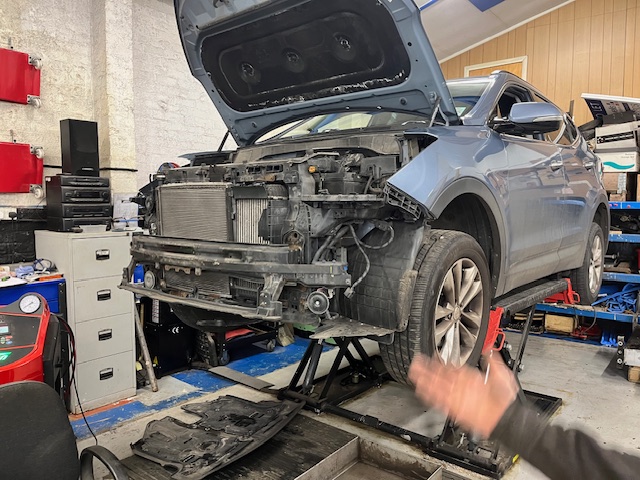Car radiators play a crucial role in maintaining the optimal temperature of a vehicle’s engine. They help to dissipate heat and prevent overheating, ensuring the engine runs efficiently. Different weather conditions, bringing different temperature and humidity levels, can have a significant impact on your car radiator, and it’s performance. But how does weather impact the car radiator? And how can you mitigate any problems that might be caused?
So, how does weather impact the car radiator?
Weather can have a number of significant impacts on the car radiator, and these include:
- Cold and freezing risks
- Hot weather and overheating risks
- Rain and humidity risks
How do freezing temperatures and prolonged cold spells impact the car radiator?
Temperatures that drop below freezing poses several challenges for car radiators. One of the biggest concerns is the risk of coolant freezing. Coolant, also known as antifreeze, is essential for regulating engine temperature, but if the coolant mixture is not adequately balanced (typically a 50/50 mix of antifreeze and water), it can freeze in extremely cold conditions. This can lead to notable radiator damage.
When coolant freezes, this will expand. This can result in cracks or leaks in the radiator, hoses, or even the engine block. This kind of damage can be costly to repair. As such, to prevent this, it is crucial to check the coolant levels and mixture regularly, ensuring that the antifreeze concentration is suitable for winter conditions.
In addition, cold weather can also cause metal components within the radiator to contract. This cycle of repeated expansion and contraction due to temperature fluctuations can cause seals and joints to weaken over time, leading to leaks. Regular inspections can help detect early signs of wear and prevent major failures.
How does hot weather increase the risk of overheating for car radiators?
While the UK is not known for extreme heat, and summers can be hit or miss, high summer temperatures can still reach levels that put strain on car radiators. In hot weather, the radiator must work harder to dissipate heat from the engine, and this can cause problems, increasing the risk of overheating. This is because a radiator’s cooling efficiency depends on proper airflow and coolant circulation. In high temperatures, coolant can evaporate faster, leading to lower levels and reducing the radiator’s ability to cool the engine. Additionally, dust and debris can accumulate on the radiator fins, obstructing airflow and reducing heat dissipation.
To mitigate these risks, you should regularly check coolant levels and top up if necessary. Cleaning the radiator to remove dirt and debris can also improve its efficiency. Ensuring the radiator fan is functioning correctly is another key preventive measure, as it helps regulate engine temperature, especially in slow moving traffic or during long drives.
What are the rain and humidity risks for car radiators?
Rainwater can lead to increased exposure to moisture, which may contribute to rust and corrosion in the radiator and other cooling system components. Over time, this corrosion can weaken the radiator, causing leaks or blockages that reduce its effectiveness.
Humidity can also contribute to condensation, which may lead to the formation of sludge in the cooling system. This sludge can obstruct coolant flow, reducing the efficiency of heat transfer and increasing the risk of engine overheating. Flushing the radiator periodically and using a high-quality coolant with anti-corrosion properties can help prevent these issues.
Routine maintenance by a professional team like ours here at MRS Heat Transfer is essential for identifying potential issues with your radiator and cooling system.We can pressure test the system, check for leaks, and ensure the coolant mixture is correct. Why not get in touch today to find out more?

